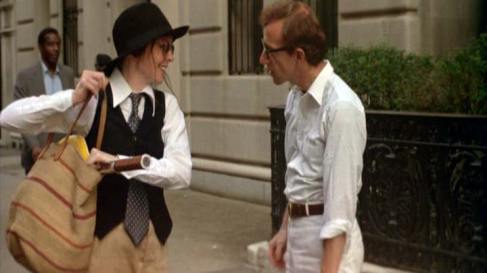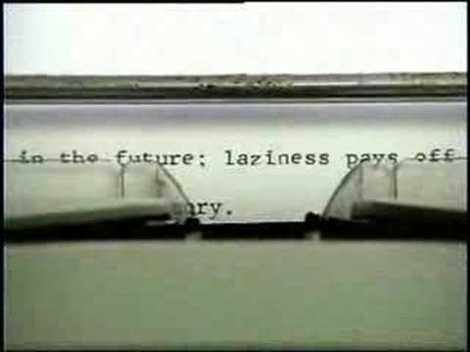 Tim Burton packs most of his romance into the iris of the camera lens. That is to say that the substance is in the style. He'd much rather feel with "looks" than plumb the depths of character or twist with a thickening plot. Case-in-point: There are enough plot holes in Dark Shadows to strike a Vampire in broad midnight.
Tim Burton packs most of his romance into the iris of the camera lens. That is to say that the substance is in the style. He'd much rather feel with "looks" than plumb the depths of character or twist with a thickening plot. Case-in-point: There are enough plot holes in Dark Shadows to strike a Vampire in broad midnight.One lingering character twist that wrung true in style and substance was the unrequited Angelique Bouchard (Eva Green). In an inspiration that outlasts the spoiler alerts, she carves out her own aortic cavity. The scoop? Prove to Barnabas Collins (Johnny Depp) that her passions for the warlock prince were more heartfelt than hateful. She offers her engorged life force on a pulmonary platter. But it shatters with brittle abandon. Sucked bloodless by the fangs of her own jealousy.
That haunting image taps a spinal shiver in me. It's less about making a muscle with our hearts. It's more about a failure to connect the fatal flaw I see and experience in the wistful intimacy of lifetime human coupling -- that failure to bridge passion with companionship.
I can count the number of times I've abandoned this quest in wedding bands. That admission is not born of resignation or cynicism but this humble conclusion: (1) we court and mate and sometimes procreate. (2) Somewhere between the packages we craft to adorn ourselves and unravel to the delight of our partners we discard those wrinkled wrappings. (3) The thrill remains faithful to the chase. 4) Once familiarity catches up, the mystery vanishes ... along with the allure of the packages we bear.
Can we learn to bear and receive other gifts? That has been the question I've asked myself. But the closest to an answer I've received are three strongly independent and beautiful women who have little else to share except a legal contract with both our names and the fluid sealing of this in ceremony.
I just came back from a teaming event with my colleagues where we got together and self-organized our priorities, roles, and responsibilities. After the planning session we congregated at a bowling alley called "Splittsville." I had no idea this was a pun on our chosen afternoon recreation. Alas, my mind was in the gutter -- just like those balls I was bowling.
But strikes, spares, and misses aside, I spent a good chunk of time talking with the women in my group about their marriage lives. I was especially interested in their own definitions of marriage success, regardless of their status as spouses or parents.
A couple of insights really excited me -- not in terms of the steaming hot throbbing stuff but in re-igniting the hope I could find a woman willing to hang with the changes as those packages unwrap. That there will be a woman with "a slow and easy smile" who can remain attentive and vested without feeling forced to shed the comfort of her own skin:
1) BAGGAGE CLAIM: No human is responsible for another person's happiness or heartache. We're here to listen, help, hold, heal, and challenge. But the marriage contract is not a liability agreement. I don't want someone carrying my baggage and I expect the same in return. The person who declared this has a rich spiritual life and as many moms as I have had marriages.
 2) WORK-IN-PROGRESS: The reasons folks stay together are constantly evolving. It's not reasonable to expect that the dynamics in play at the outset burrow into the relationship for life. We're constantly latching on and letting go. But it helps to recognize those changes. Assuming no change is a recipe for a stuck relationship. As Woody Allen laments in Annie Hall:
2) WORK-IN-PROGRESS: The reasons folks stay together are constantly evolving. It's not reasonable to expect that the dynamics in play at the outset burrow into the relationship for life. We're constantly latching on and letting go. But it helps to recognize those changes. Assuming no change is a recipe for a stuck relationship. As Woody Allen laments in Annie Hall:"Relationships are like sharks. If they don't keep advancing, they begin to suffocate, and die."
My question for Woody is what kind of movement does the advancing invite?
3) TWO WAYS ABOUT IT: Dialog is the entry point for communication. All those adages about not going to bed angry or carving out a date night as part of a well-oiled calendar planner all have their merits. But one person cannot perform a wholesale unloading without some unburdening of that load. In fact one colleague went so far as to say that she's integrated performance reviews from the workplace into the partnership aspects of her marriage.
4) BARGAIN PARTS: Quirks are the indelible etchings of personality. Our cognitive wires are not crossed. These are not choices. They are soul-bearing and they're who we are no matter how we may sublimate or conceal them. But there's no hiding from the looking glass of intimacy. That's a two-way mirror the couple must hold up in the bargain and for one another. For the chemistry to flow, it's got to be unconditional on both ends.
Can the original spark re-ignite? My jury will remain out as long as necessary before it can say "I do" and "it can" again.











